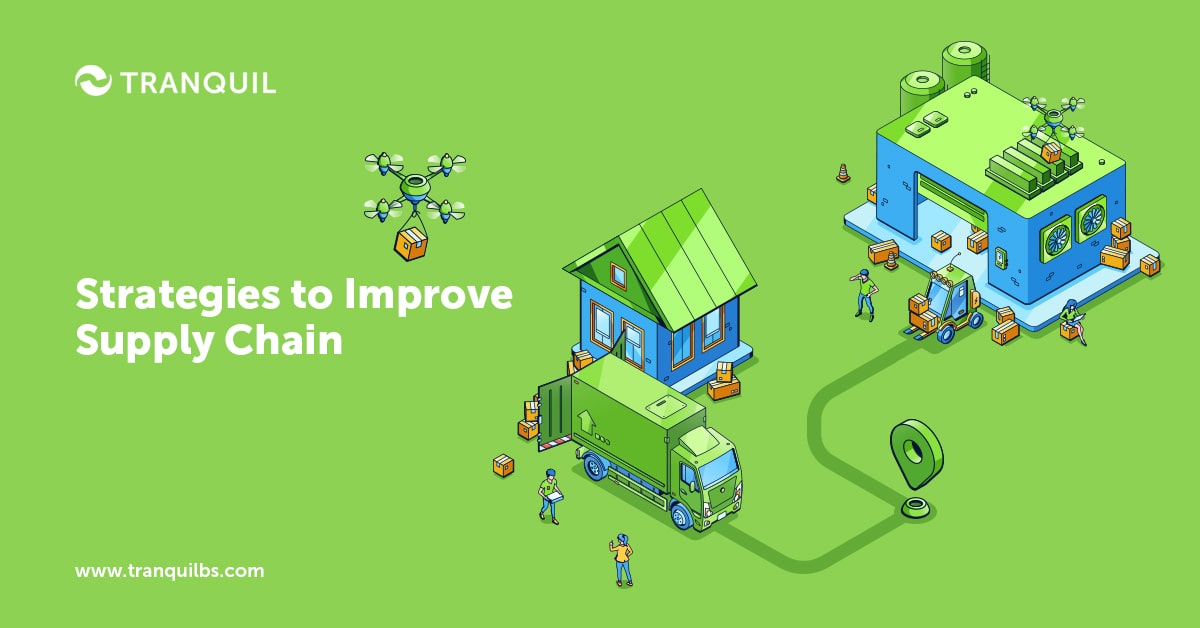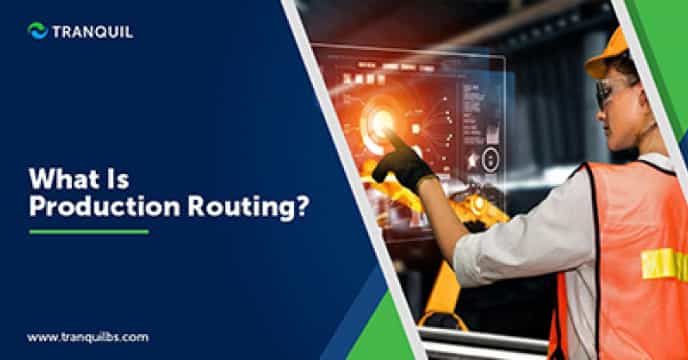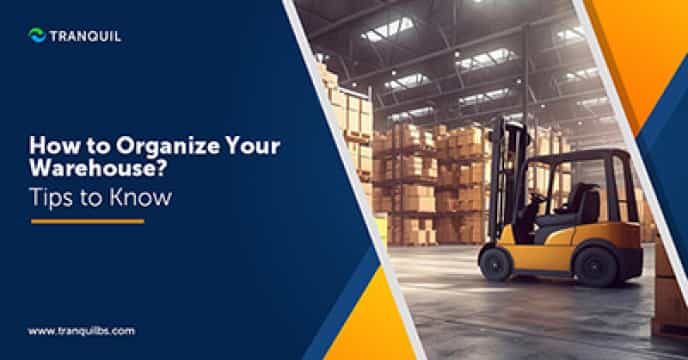No matter how efficient and capable supply chain managers are, they all need to spend some time in revamping their strategies as the business expands and the environment transitions.
Customers have become especially discerning and demanding now, and want ultra-quick service.
This means that every element, every cog in the supply chain wheel has to be evaluated, monitored, and optimized to ensure that products reach the market quickly and efficiently.
Supply chain improvement ideas need not necessarily cause a great deal of effort of spending.
Simply being focused and future-ready, and training your team properly can often get you better results – more efficiency and speed.
ALSO READ: Different Ways to Improve the Procurement Process
So, let’s take a look at some ideas that can help:
Ways to Improve Supply Chain
1. Set Goals
For employees to work harmoniously and cohesively with one another, it’s essential that all employees know their roles and responsibilities, and what’s expected of them.
It’s a good idea to have a quick meeting daily, prior to starting work, for this purpose.
Team supervisors should convey the plan for the day and interact with the team to ensure that they have understood.
It can be executed as checklists for the whole group at the start of the day and assessing what they got right and what they didn’t at the end of the day so that they can amplify their strengths and work on their weaknesses to rectify failures.
Having a goal-focused attitude enables to have a thriving work environment as it conveys a performance KPI to all employees, allowing them to measure up against team members.
This healthy competition can help improve the accuracy and productivity of employees, leading to overall efficiency.
ALSO READ: Benefits of Having an Employee Self Service System
2. Boost Supply Chain Visibility

This is one of the best ways to improve supply chain.
Supply chain visibility is simply your ability to monitor and follow every component of your product from the time it leaves the vendor till it reaches you.
One way to do this is giving your vendors the ability to check your inventory levels in real-time so that they have a clear understanding of the situation, and can fulfill demand in the future accurately by planning ahead.
Important team members should be allowed to access inventory count details so that they can form their own strategies independently, without having to wait for messages to be relayed up and down the command chain.
ALSO READ: Cost Reduction Strategies in Procurement
3. Optimize Inventory
Always check the inventory levels at hand, and make sure you only stock what is exactly required, and nothing more; this way, you don’t run the risk of over-stocking and obsolete stock, and you won’t incur the high cost of holding inventory either.
Inventory carrying costs if stocked for a year, can make up over 60% of the cost of a product.
Remember, holding too little leads to the risk of stockouts and delayed production and shipments, and you don’t want that either.
You must also do demand planning and forecasts to help optimize inventory.
Robust inventory management software from Tranquil can help you do this effectively.
4. Leverage Outsourcing


It’s not necessary for a business to handle each and every aspect of their business themselves.
Often, outsourcing can bring numerous advantages, and supply chain management is no exception to this.
You can save your internal resources and time, and focus on other more value-adding tasks, instead of being continuously focused on improvement strategies for your supply chain.
This could have a negative impact on your other processes too.
ALSO READ: Accounting Trends for 2023
Third-party logistics and supply chain management service providers take the entire responsibility of these activities and help your company attain steady growth.
They are experts in the field, enabling them to plan well and mitigate potential risks.
You can contact third-party providers for the long run, after considering the various services and levels of service they can provide.
You can outsource either specific parts of your supply chain, or the entire process to them, depending on your business model.
This strategy will be especially beneficial for you if a part of your business necessitates expert supervision in the long term for the economy and improved outcomes.
Today many businesses outsource activities like procurement, customer care (especially call centers), packaging, and shipping.
ALSO READ: How Does Landed Cost Affect the Cost of Inventory?
5. Enhance Distribution Network
Supply chain improvement can also be achieved by improving your distribution network.
You can either do it with a holistic approach or a cluster approach.
The holistic approach involves viewing your distribution network in its entirety, going over the important elements, and getting an understanding of how each element work in the system.
The cluster approach involves clustering or grouping documents like graphs and charts, allowing you to observe the processes for individual functions of the business.
ALSO READ: Supplier Aging vs Customer Aging
6. Automate Key Activities and Manage Them Better
When you deploy automated elements in a warehouse or urge your vendors to do so, it can significantly improve efficiency in a manner that can be measured, and get you the desired results.
It must be remembered that automation may not be effective for every business – but for the majority, it is.
Discuss with top management, warehouse managers, and planning departments if automation and robotics will work for your company.
Discuss the future, and convey what you feel about the feasibility of achieving their goals with the present process.
ALSO READ: Understanding Sales Management in ERP
Moreover, when you do bring in change, you must be diligent to make sure that every automated part is properly managed and maintained.
Of course, this will necessitate more education and training for everyone involved including your vendors.
Supply chain managers are not under obligation to ensure the management of automated elements; however, you can regularly engage with them to ease the transition and make the process more efficient.
7. Engage your IT Department


Unfortunately, the IT team is brought in mainly on two occasions – if something is not working in the present system, or when it’s time to implement new software.
However, if you confer with them at regular intervals about making changes to the software to improve supply chain management, it will be far more effective.
Your IT team has the best understanding of emerging technologies in the field, and are better positioned to advice you on what your organization can do to maintain a competitive edge.
ALSO READ: Sales Order vs Purchase Order
ERP software like Tranquil can help you manage your supply chain better in addition to integrating your business processes like finance, HR, procurement, sales, and so on, in a single, centralized location.
It helps boost productivity and efficiency, and assigns accountability as well.
Automated purchases help you stay one step ahead of production schedules and be consistent throughout the process.
ERP can help you bring positive change in your business, giving your better visibility into your entire business process end-to-end, as well as each individual process.
Tranquil is a cloud-based, flexible and scalable solution that is capable of handling the extra workload should you add more plants, warehouses, locations, employees, and more.
ALSO READ: Common Problems and Solutions in Manufacturing Industry
Here are some more technologies you can leverage:
· Wireless Tech
Free your employees from the maze of cables and enable them to work faster and with much less clutter.
Use mobile printers for warehouses where you pick and pack, and ship out your orders.
It helps boost productivity tremendously, by making scanning and label printing quickly accessible, and easy.
It saves them the time of making several trips to the office – which is an unnecessary waste of time and effort.
ALSO READ: Route and Van Sales – Challenges and Opportunities
· Shipment Tracking Tools
Today we have sophisticated cloud-based tracking tools which have buyer interfaces so that the whole process is transparent, and displays exactly where their package is at a specific time, and the time required to reach their doorstep.
Customers can be kept in the loop from start to finish, even informing them when their package is out for delivery.
This helps to keep customers not just satisfied but happy, and delivers an exceptional customer experience to build brand loyalty.
8. Evaluate Your Training Programs
You may need to introspect and identify where your efficiency is failing – and take a deeper look at your training programs in the company.
You could have meetings with department heads, especially those that have the most employees.
You must also go over your training materials – videos, printed notes, infographics etc., as well as the procedures, to ascertain that they are current and are focused on boosting productivity.
It would be good to evaluate the morale of your supply chain as some undesirable elements may encourage goals that are impossible, and eventually impact hard-working employees very negatively.
ALSO READ: Things to Know About the Order-to-Cash Process
9. Develop Robust Relationships with Vendors
A company’s relationships with its vendors impacts the supply chain and its efficiency.
It is essential to build and sustain strong relationships with your vendors for the long term – even after finalizing deals.
Healthy relationships with vendors can be created with some careful thinking and strategizing; set goals for gauging performance, continuing value, and maintaining resolution of conflicts.
ALSO READ: Ways to Reduce Customer Lead Time in Inventory
10. Evaluate Procedures Regularly


This is an extremely important step.
You must review your procedures and policies periodically to make sure you maintain compliance with changing regulations, and boost efficiency across the supply chain.
It will also help you to steer clear of supply chain hurdles, mitigate the risks of fraud, and streamline your operations.
By regularly reviewing your procedures, you can identify the different risk elements, and assess the impact they have on your finances.
ALSO READ: What is Reverse Factoring?
11. Implement a Good Project Plan
Improving the efficiency of your supply chain is a continuous process that needs periodic evaluations – it’s not enough to just implement a good plan at the outset.
This involves having a thorough project plan to make sure that you working to achieve your stated objectives on an ongoing basis.
A solid project plan functions as a framework that helps you to make strategic investments to enhance the capabilities of your supply chain, develop distribution strategies, set channels for communication, recognize opportunities and threats, as well as facilitate decision-making across functions and projects to improve the supply chain.
When you develop and implement a project plan, it becomes the central point of reference for all plans and projects.
You must make use of it to ensure that all the investments and decisions are aligned with your supply chain objectives and on a wider scale, the corporate vision.
ALSO READ: Debit Note vs Credit Note
Conclusion
To improve the quality and efficiency of your supply chain, there needs to be extensive and intense cooperation and collaboration among disparate departments and teams – but the end result is definitely worth all the hard work.
With Tranquil Cloud ERP, you can get outstanding visibility into your supply chain, and be guided into making the right investments into tech. You can also improve your training and strategize every element of your supply chain, accelerating your company’s efforts in achieving excellence in operations across the organization, and achieving your goals and vision. Do schedule a demo of Tranquil ERP to know more.





